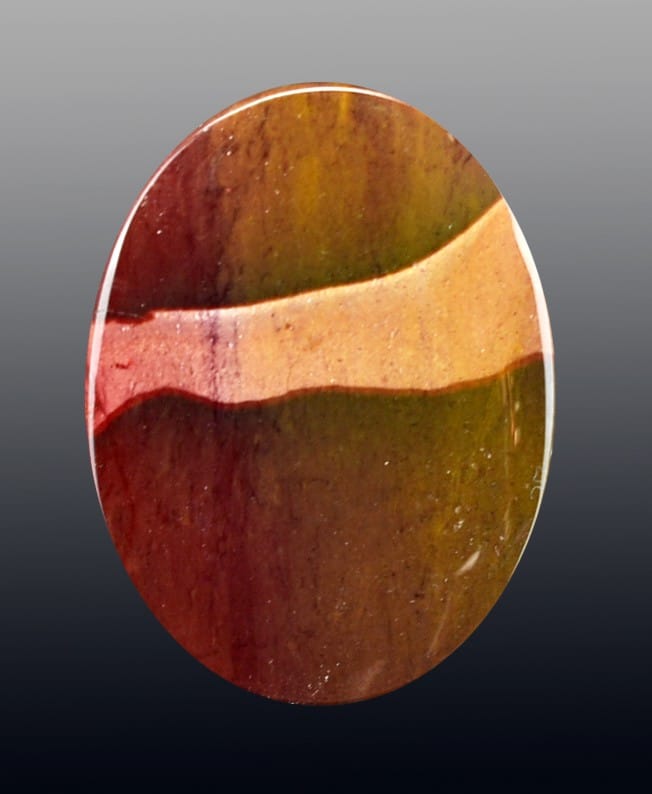Mookaite 44.13cts Oval 40.00 x 30.00mm H7 Australia M0085
| Jasper:Mookaite Jasper 44.13cts Oval 40.00 x 30.00mm H7 Australia M0085 Mookaite Mookaite is sometimes incorrectly called mookite, mookalite, mookerite, mook, mook jasper, moukaite, moakite, moukalite & mouakite. This name is derived from Mooka Creek. Mookaite can be described as chert, opalite, chalcedony or combinations of the three. The degree of silica in the material determines its description. The best material is the chalcedonic variety. It generally occurs on nodules, lying in decomposed radiolarian clay beneath the floor of the creek. Subsequently, the radiolarite with less silica has decomposed into beds of soft white clay which now surround the stunning nodules. Mookaite is actually a fossiliferous sedimentary rock. The correct geological term for the formation that mookaite occurs in is: Windalia Radiolarite. The Windalia Radiolarite consists of varicoloured, radiolarian siltstone, siltstone, and chert, commonly porcellanized in outcrop. Casts, in places phosphatized, and imprints of ammonites are locally present. Stratigraphic relationships with adjacent units, indicate that the Windalia Radiolarite formed on a marine shelf. It is reasonably common to find cavities left by decomposed belemnite casts or in some rare cases , impressions of ammonites. Microscopic examination of the radiolarite has shown that this rock consists principally of the remains of tiny organisms known as radiolaria, which possessed an unusual skeletal structure of opaline silica. Countless numbers of these microscopic animals were deposited as sediment in the shallow, near shore area of ancient seas. When the seas retreated, these sediments were cemented into solid rock by silica carried in groundwater, either from the radiolaria themselves or from weathered rocks nearby. The stone is hand polished on both side |
$29.70
1 in stock
1 in stock
